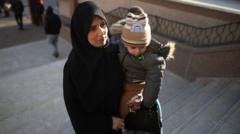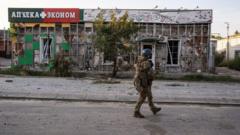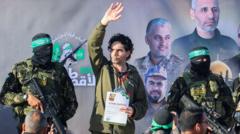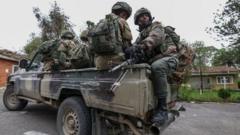As negotiations for a ceasefire between Israel and Hamas reach a critical stage, a BBC Verify investigation uncovers that nearly 100 airstrikes have hit the area in Gaza deemed safe for civilians. Despite Israel’s designation of this 'humanitarian zone,' residents are facing near-daily bombardments, leading to widespread casualties and injury.
Escalating Violence in Gaza's 'Humanitarian Zone': A False Sense of Security?
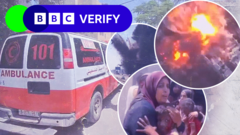
Escalating Violence in Gaza's 'Humanitarian Zone': A False Sense of Security?
Recent BBC Verify analysis reveals 97 strikes within Gaza's designated 'humanitarian zone', raising urgent questions about civilian safety amid ongoing conflict.
The area within Gaza which has been proclaimed a "humanitarian zone" by Israel's military has experienced intense bombardment, with BBC Verify reporting 97 strikes since May. The analysis emerges as ceasefire negotiations between Israel and Hamas appear to be on the verge of a breakthrough, with mediators in Qatar indicating that talks are concluding.
Established by the Israel Defense Forces (IDF) in October 2023, the "humanitarian zone" was intended to safeguard civilians from violence. However, this area, which encompasses densely populated regions including Khan Younis and Deir al-Balah, has become a site of increased military action, as confirmed by the latest findings on attacking trends.
According to international humanitarian organizations, over a million people reside in this densely populated coastal territory, often in makeshift tents under dire conditions with limited infrastructure and scarce access to emergency aid. The IDF stated that it targets Hamas militants purportedly exploiting civilian existence as shields, launching attacks from within this zone.
The ongoing conflict has been fueled by Hamas's assault on October 7, 2023, which led to significant casualties on both sides and prompted an Israeli military campaign aimed at dismantling Hamas capabilities. Since then, violent incursions have destroyed vital infrastructure in Gaza, with Palestinian health officials reporting over 46,600 fatalities during the ongoing hostilities.
Bombardments within the IDF's "humanitarian zone" have increased, as local media note that more than 550 individuals died from the strikes mapped by BBC Verify. While the IDF has acknowledged responsibility for 28 of these attacks since May, further incidents remain unverified. Gavin Kelleher from the Norwegian Refugee Council highlighted the frequency of strikes, regardless of the zone's supposed protections.
Residents like Khaled Abdel Rahman recount their disillusionment with the label of "safe zone," expressing the constant fear and insecurity prevailing in their lives. Access for foreign journalists in Gaza is heavily restricted, necessitating reliance on local media for information about the striking situation.
In evaluating the violence within the "humanitarian zone," BBC Verify analyzed over 300 videos and social media posts, revealing disturbing scenes of destruction and civilian casualties. The frequency of high-casualty events underscores the ongoing peril facing inhabitants, in stark contrast to the supposed security blanket afforded by the Israeli designation of the area.
Moreover, the IDF's boundaries regarding this zone have shifted significantly, undergoing at least 20 modifications—and expanding from 7 km² to 72 km² at its largest extent. While IDF evacuation notifications ostensibly aim to ensure civilian safety, uncertainty looms large over when and how these populations might safely return home, intensifying the distress experienced by civilians amid changing and often ambiguous military mandates.
UN representatives emphasize the absence of any truly secure refuge in Gaza amidst the turmoil, as civilians navigate an increasingly dangerous reality devoid of genuine safety. Dialogue between conflicting parties continues, but for those in Gaza, hope is frayed as violence persists within the quadrant supposedly created to protect them.



